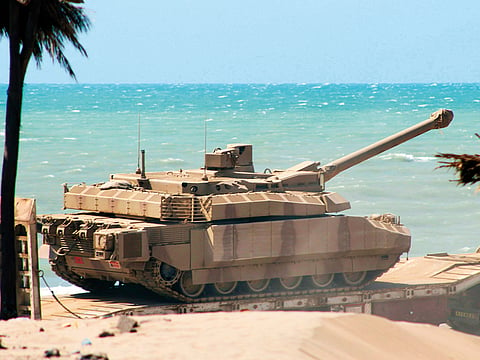Book review: 25 Days to Aden — An informed comment on Yemen's contemporary military history
UAE’s successful mission to defend the strategic port city, facing down a fanatical enemy

For more than eight tumultuous years, Yemen has been in the grip of a vicious war that quickly escalated, resulting in thousands killed and countless others wounded. The country is in shambles.
Michael Knights, one of the foremost military historians of our times, delves into Yemen’s recent history, dominated by its various factions, and comes out with a highly readable account of the war.
‘The unknown story of the Arabian elite forces at war: 25 days to Aden’ is an important book to understanding not only the story of Yemen but also how the UAE responded to the then president Abd Rabbo Mansour Hadi’s call for military assistance at the UN in 2015.
When the UAE military chose to help the Yemenis in Aden, the Houthis were at their maximum strength and the Yemenis were at their weakest. That had to change, so the UAE commanders designed a campaign of air strikes and naval gunfire that would target the Houthi fighters, vehicles and heavy weapons.
At the same time, the UAE helped the Yemenis to build up their strength. The book details how the UAE shifted the balance, causing a huge setback to the Houthi plans.
25 days to Aden highlights how the Yemeni defenders of Aden were split into defensive pockets: one was Tawahi, on the volcanic peninsula of Greater Aden. The darkest moment of the Aden battle, according to Knights, happened when the commander of the Resistance in Aden, Ali Nasser Hadi, was killed by a Houthi sniper in May 2015.
Suddenly the Yemeni defence collapsed and the Houthis flooded in, and they drove the refugees into the sea. Hundreds were massacred. At that critical moment the UAE had a choice: give up and leave, or stay and help the Yemenis fight back. The UAE stayed and eventually the battle was won and Tawahi was liberated.
Love of Southern Yemen
An outstanding book that provides answers to most questions raised by Yemen’s many crises since 2011, 25 Days to Aden discusses the effects of culture, religion, indoctrination and drug use in the modern battlefield, especially in the Yemen context.
As the author notes, in the battle of Aden there was a very clear difference between the two sides in how they motivated their fighters. The Houthis were far from their homes and they used a lot of child soldiers who did not even know where they were in Yemen or why they were there.
Iranian backed militia often misled their soldiers and told them they were fighting al Qaeda, not the Yemeni government. They often gave drugs to Houthi soldiers to cloud their minds and keep them fighting — mainly Captagon, the drug Iran and Lebanese Hezbollah give to all the militias around the Middle East.
On the other side, the Yemeni defenders of Aden were motivated by a mixture of things: by religion and also by love of Southern Yemen and their desire for independence.
Of course, being Yemenis, they also needed a lot of qat, the chewable narcotic leaf. Knights is dazzling with detail on how the whole battlefront would go quiet as tons of qat leaves were delivered to both sides — facets of the war that would go unnoticed otherwise.
Informed comment
25 Days to Aden reminds readers that Yemen is far more than the sum of its dysfunctional parts. The book details how the sixth Aden airport fighting, which was due to begin on the 27th day of Ramadan in 2015, became the crescendo of the battle.
This was the moment when everything came together: all the planning and insertion of new forces into Aden, all the training and equipping of Yemeni resistance forces, and all the intelligence profiling and the intense bombardment of Houthi forces.
When the Yemenis saw the UAE armoured vehicles for the first time, a strange feeling came over the Yemeni attack force. They believed, for the first time, that they could take the all-important airport, the author notes. They became unstoppable because the UAE had carefully, yet brilliantly, set them up for success.
A valuable addition
With vivid insights, Knights’ work immerses the reader into the romantic but mouldering port-city of Aden: its towering volcanic cliffs, Victorian monuments, out-of-place British architecture, beach resorts, fishing ports, dense alleys and roundabouts.
But importantly it tells the story of the Aden battle — a tale of cooperation between Yemenis and Emiratis. Together with Emirati Al Forsan rangers and Land Forces artillery, the Yemenis launched a spectacular attack on the Houthis that pushed them out of Aden and pursued them for a hundred kilometres in all directions. The rest, they say, is history.
Based on countless interviews with first-hand sources, The unknown story of the Arabian elite forces at war: 25 days to Aden is an informed comment on contemporary military history.
It is a valuable addition to the literature around Yemen’s history and the ongoing war by someone who fully understand the region, its people and politics.
25 Days to Aden will be available from Jan. 26 | Author: Michael Knights | 230 pp. | Profile Editions
Sign up for the Daily Briefing
Get the latest news and updates straight to your inbox


